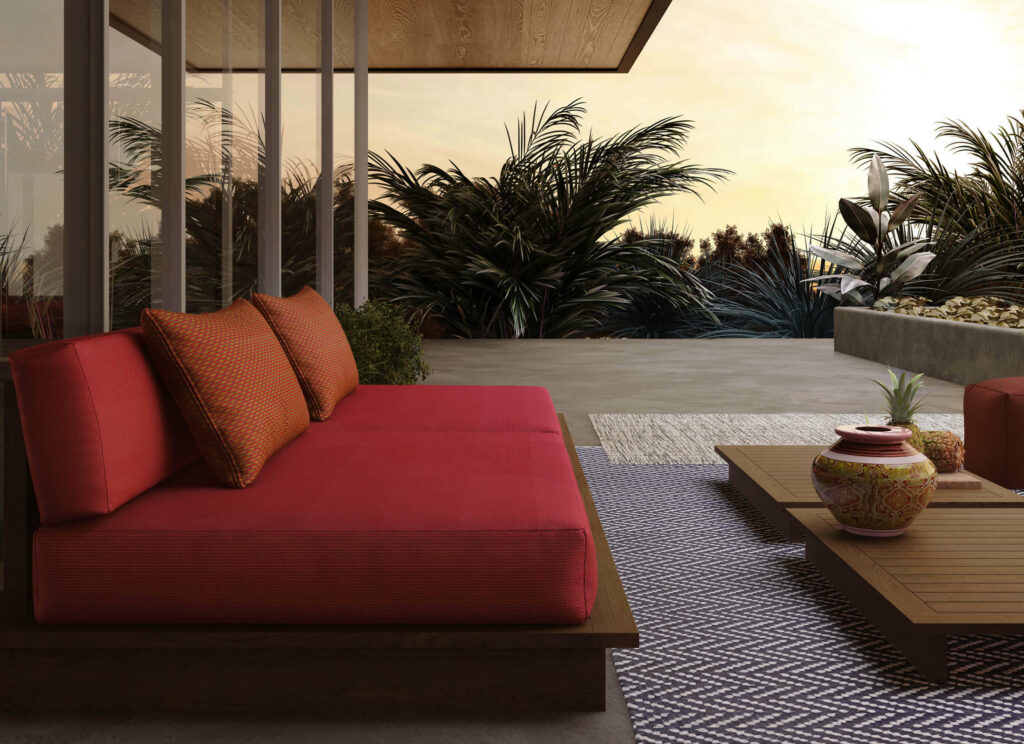5 colourfastness tests that secure FibreGuard fabrics’ optimal fade protection
FibreGuard fabrics undergo rigorous laboratory testing to ensure the most robust colourfast to light-resistant results. The colourfast-to-light properties in our easy clean fabrics mean that their vibrant colours have been engineered in such a way that they will not fade or be washed out, even after prolonged exposure to daylight in all seasons.
But how exactly are our fabrics protected against fading, even after prolonged exposure to UV rays?
Let’s find out.
What does ‘colourfast fabric’ really mean?
The idea of colourfastness is really broad once you look at it because colour can fade out of fabrics in so many different ways if they haven’t been engineered properly! From rubbing through general wear and tear, to washing, ironing and light exposure: the colours in fabrics must be able to withstand them all.
Colour fastness testing in a third-party laboratory ensure that our fabrics’ colours stay fresh and vivid, just like the colours in the fabrics you're seeing in this article.


FibreGuard's 5 key colourfastness tests:
Colour fastness to rubbing (standard: ISO 105-X12)
This colour fastness to rubbing test (also known as the ‘Crock’ test) records the amount of colour that a fabric emits when rubbed (mainly for upholstery fabrics).
How it works: a fabric sample is placed in the crock test machine where it’s rubbed mechanically with a wet and dry cotton cloth. The amount of colour that stains the two cotton cloths is evaluated against the Grey Scale for Colour Change.
Colour fastness to light (CFL) (standard ISO 105-B02)
How it works: a fabric sample is placed into a special testing chamber together with a standard blue scale reference fabric consisting of 8 blue shades ranging from dark to light. After testing for a range of criteria under different conditions, the fabric sample and the reference sample are compared and then rated on a grade from 1 to 8. The higher the rating, the better the fabric will perform to daylight.
Colour fastness to water (standard ISO 105-E01)
How it works: a fabric sample is sewn together with a piece of standard multi-fibre fabric. It is first drenched in water and then placed under pressure between two plates. The colour change of the fabric sample is measured using the Grey Scale for Colour Change.
Colour fastness to washing (standard ISO 105-C0)
How it works: A fabric sample is sewn together with a piece of standard multi-fibre fabric. It is placed into water mixed with standard washing detergent. Small steel balls are added to simulate the mechanical action of a washing machine. The colour change of the fabric sample is measured using the Grey Scale for Colour Change.
Colour fastness to dry cleaning (standard ISO 105-D01)
How it works: A sample fabric is placed into perchlorethylene together with a steel disc to stimulate the mechanical action of dry-cleaning equipment. Ultimately the colour change of the fabric sample is measured using the Grey Scale for Colour Change.


Fade resistant, easy clean fabrics
Our extensive colour fastness testing is an essential part of the production of all FibreGuard fabrics: the vibrant colours and colour durability are two of the key FibreGuard characteristics that our customers love most.
If you are seeking the ultimate in fade resistant fabrics, check out our high performance FibreGuard Outdoor range. Engineered for both outdoor and indoor use, its strong design and construction help these fabrics take exposure to the sun’s harmful rays in their stride.
This solution-dyed fabric range is also anti-bacterial, anti-microbial, and resistant to mildew & odours.
Contact us today for stockist information and contract project detailing.